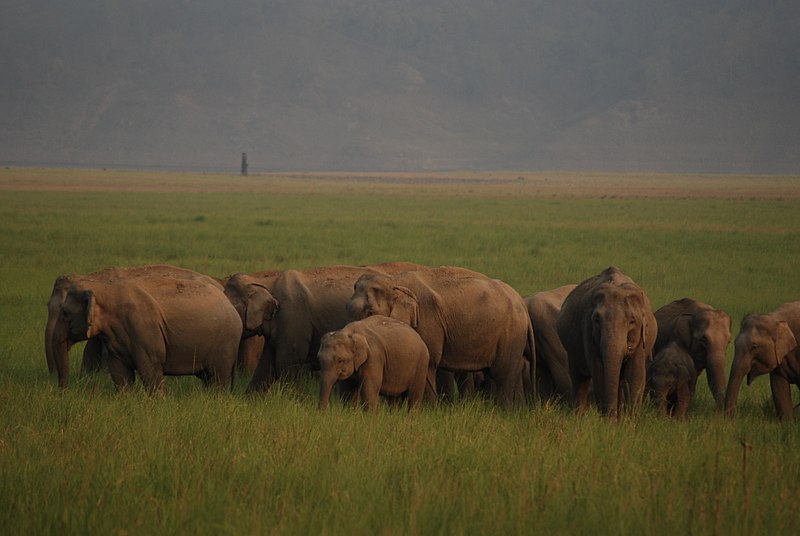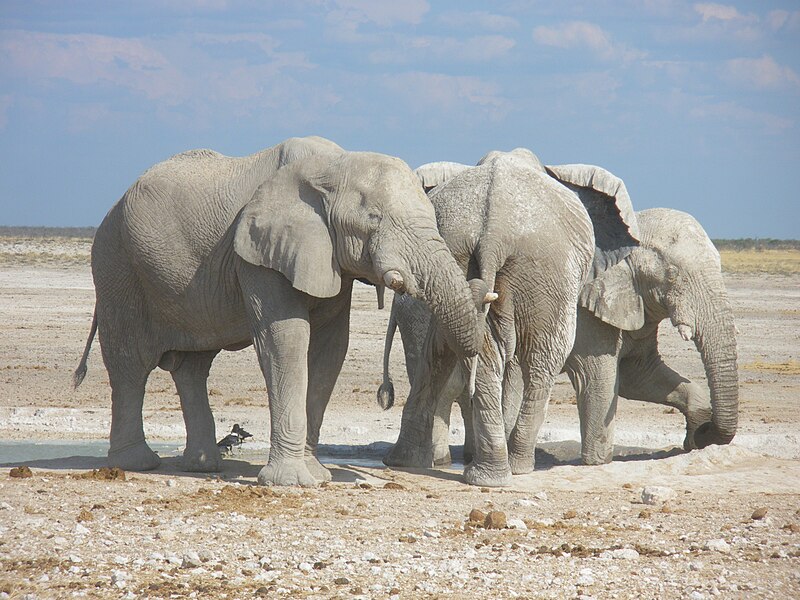.

Elephant herd at Jim Corbett National Park, Uttarakhand, India: photo by wribs, 2007
To
feel a sense of loss is our next assignment. We zoom in on an elephant
graveyard. The red baked earth of the plains, the dry, withered
foliage. The great beasts are taking turns paying last respects, pawing
with heavy gravity maybe just to stir up a little ceremonial dust. A
kind of halting inquiry, tentatively caressing the remains of the loved
one with a tenderly lingering trunk. Gentleness perhaps masks the
quality of interrogation in this process. Ah, dear gone one, what do
you know now, is there any of it you can tell us?


In the elaborate game which we have constructed and are so preoccupied with, (call it Life, call it The World) our living seems to be a major casualty. The grief that comes of that, barely assimilable any more. If only ...
ReplyDeleteas we continue to poison and gore and ruin, with our insufferable jealousy and careless spite
Even the elephants have to be made tuskless in order to survive.
Collectively we don't deserve that concession.
The questions echo, bounce back with a thin edge of disdain.
ReplyDelete,
Much as with the extermination of the sea otter in the Pacific Northwest for its fur some two hundred years ago, the extermination of the African elephant now is being driven by a wealthy Chinese market for animal parts. The unhappy facts can be found here and here.
ReplyDeleteToo many two-legged animals round these parts.
ReplyDeleteScientists are now saying that wild elephants will be extinct by 2020. That is only 7 years. I hope we don't let that happen.
ReplyDeleteIf that comes to pass, I will go to the African desert, touch their bones, and miss them. Who will join me?
All these good words suggest that there still remain "parts" (indeed even perhaps intact wholes) in and of the once abundant living world to which at least a few of the devolved bipeds (us) still offer respect, reverence and gratitude. These feelings must be the remnants of what was once called blessing, or prayer, or what you will. But what can we do to protect, cherish, even save that vanishing sacred natural world, when every day there are more of these dangerous humans, the ones who will dangle money before the destroyers of nature and the ones who will grab that money, kill fellow creatures, and, appetite for profit once thus whetted, come back for more?
ReplyDeleteIt is after all an "ethic" everyone now learns at a very early age: the living world is there for the use and profit of the harbingers of death.
Lila, I fear that even the most dire timeline warnings of scientists these days usually fall short of the actual accelerating pace of the dangers. Who really knows what might be left alive in seven years? I for one probably won't be, and in any case can't get about any more. But if you are there then in Africa touching the sacred bones of the lost ones, my spirit will be there with you; and for the moment, in the present, my heart is with yours now.
Thank you Tom. It is good to talk with you again. I chanced upon your blog when investigating Holbein's Anamorphic Skull. What odd chance when just an hour earlier Kush from Cloud House was urging me to write a book about William. I love chance. It is so magick.
ReplyDeleteI am here
ReplyDeleteand having travelled the world
there is no place like this.
In times like these, when so many are lost, it must be very good to have found your place.
ReplyDeleteI am indeed grateful.
ReplyDelete